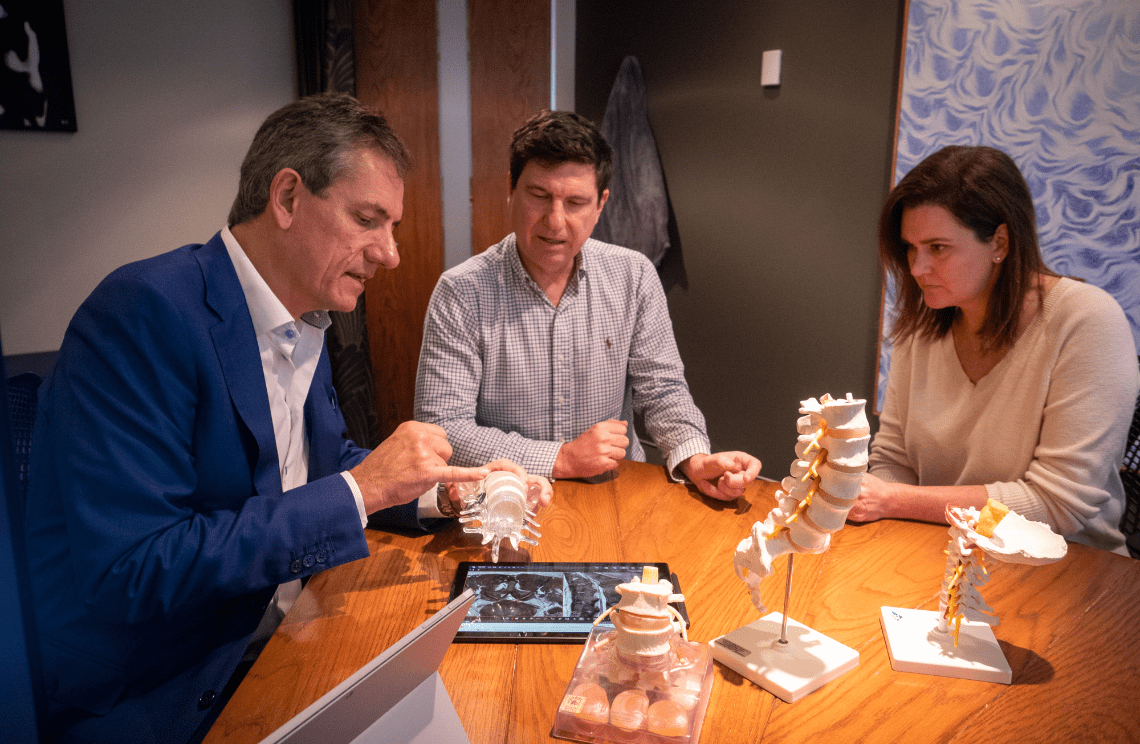Why is it done?
It is usually done where there is pain due to nerve irritation or compression in the spine. Specifically, it is most often used for two conditions. The first is spinal stenosis and the second is sciatica, usually due to a disc protrusion. It is sometimes done for low back pain, but it is not often very effective for this.
What is it?
This is an injection into the spine, into the epidural space. This is the space between the bony spinal canal and the spinal cord and nerves. The procedure is similar to that done for pain relief during childbirth. The injection is different in that it contains local anaesthetic and steroid.
How does it work?
The local anaesthetic works to numb the nerves in the area. This is temporary and lasts about twelve hours (usually overnight). The steroid is like prednisone or cortisone, and it acts to decrease swelling and inflammation. It helps decrease the nerve irritation, and usually starts working a day or two after the injection.
How well does it work?
The local anaesthetic is always effective, but only lasts overnight. The steroid is variable in how well and how long it works. Some people get no benefit and in others the effect is permanent. Overall, 80% get some benefit, and it is still effective in 60% in three months. Only about 10% of people still have a benefit after six months.
How is it done?
It is usually done by an anaesthetist in the operating theatre of a hospital as a day case. Here all the equipment needed is available, and it is a clean environment. Some local anaesthetic is injected into the skin in the low back region, and a needle is inserted between the bones into the epidural space. The mixture of local anaesthetic and steroid is then injected. You are required to stay in hospital for a few hours for observation.
What are the risks?
This is a very safe procedure. The main complication is that the injection is given into the wrong place – into the intradural space. This means the needle goes into the dura (the sac containing the nerves) rather than next to it. This is not usually serious but a number of things can occur if this happens. The first is that the local anaesthetic can reach the nerves more easily and your legs become numb and heavy for a few hours until it wears off. The second is that some spinal fluid leaks from the little hole in the dura (sac around the nerves) and you get a headache. The third is very unlikely, but a few cases of nerve scarring with increased leg pain and weakness have been reported.
Other risks are much less common and have only been reported in a few cases. These include infections such as meningitis or a spinal abscess, or an epidural haematoma (a bleed into the spine) with the possibility of paralysis.
The dose of steroid used is small and side-effects such as those seen with steroid tablets such as cortisone or prednisone do not usually occur. A few cases have been reported where temporary worsening of heart failure or diabetes has occurred.
What does my doctor need to know?
You should let your doctor know if you are on any tablets that increase your risk of bleeding. These include warfarin, anti-inflammatory tablets or aspirin. Your procedure may be delayed until you have stopped these drugs and their effects have worn off. You should also remind your doctor if you are diabetic or have significant heart failure, as special precautions may need to be taken.
